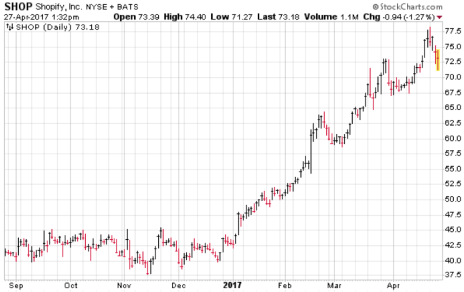The Best Stocks in the Market Often Look “Too High” Right Before They Keep on Rising
We’ve been in the stock advice business for nearly five decades, and we can say without hesitation that one of the toughest things for most investors is understanding that the stock market is a contrary animal—most of the things that make sense in the real world don’t apply to the stock market.
The examples are numerous. In the real world, we’re taught to stand up to adversity (“hold your ground”), but in the market, you’re far better off running away (cutting losses short) when things start to go against you. For sentiment, the real world teaches us to be optimistic and to think positively, but when you see a lot of that in the market, it’s usually near a top.
In other words, the market can be pretty darn counterintuitive.
A good example is when investors look to buy stocks. Whether we’re cutting grocery coupons or shopping for a new car, we all like to get bargains in the real world. And people try to carry that over to the stock market—most investors like to buy low (or, at least, what they think is low) after a big decline, thinking they’re getting stocks on the cheap. “Buy low, sell high” is the mantra for many.
But for growth stocks, buying low usually doesn’t mean you’re getting a bargain. It usually means you’re buying a laggard! That’s right—believe it or not, in the market, strength tends to lead to strength, while weakness tends to lead to weakness.
It only makes sense if you think about it. Big institutional investors (mutual, pension and hedge funds, along with insurance companies) buy and sell billions of dollars, which means that to build or unwind a meaningful position takes weeks or months. Thus, if you’re buying a stock that’s price is declining, chances are that big investors are dumping shares—and will continue to do so, especially if the company is struggling.
Of course, you do want to look for lower-risk entry points. A stock that’s been trending higher over time and starts to consolidate for three or four weeks can often provide a good entry point. But there’s a big difference between buying strong stocks on normal pullbacks and buying stocks that have been getting slammed for the past few months, thinking they’re bargains. They’re usually not.
For proof, we did a multi-year study of all our recommended stocks in Cabot Growth Investor, comparing the performance of each stock against a number of characteristics they had at the time we bought them.
It turns out that buying stocks that had been outperforming the market for less than six months resulted in mediocre gains.
But the stocks that had been outperforming the market for at least six months when we bought them produced great gains, including the vast majority of our big winners. Thus, strong stocks tended to remain strong
The trick here is that, in the market, all we know for sure is the past. So if a stock has run from 30 to 40, it looks high. But if that stock then goes to 60, the 40 level will seem low! And, of course, that’s what all the big winning stocks of every cycle do—rise from 20 to 30 to 40 to 60 to 80 to 100. Obviously, they will top out eventually, and that’s why having sell rules is important. But the best stocks in the market often look “too high” right before they keep on rising.
Take Shopify (SHOP), which spent about four months bobbing between 38 and 45, then exploded to new highs near the start of January and rocketed north of 50 before the end of the month. Having just run up more than 10 points, the stock appeared to many as too high to buy.
But the stock kept chugging, soaring to 64 in short order, and reaching 73 in late March and 78 in mid-April! Of course, such big moves are relatively rare, but it’s just such runs that make all the difference in your portfolio. (By the way, SHOP’s normal, controlled dips in early March and early April represented solid entry points.)
The overall point here is simple: If you’re a growth investor hunting for big winners, you must re-train your mind. Instead of looking for bargains, you want to look for stocks that are generally trending higher and outperforming the market—those are the stocks that big institutional investors are buying because their outlooks are improving rapidly.
